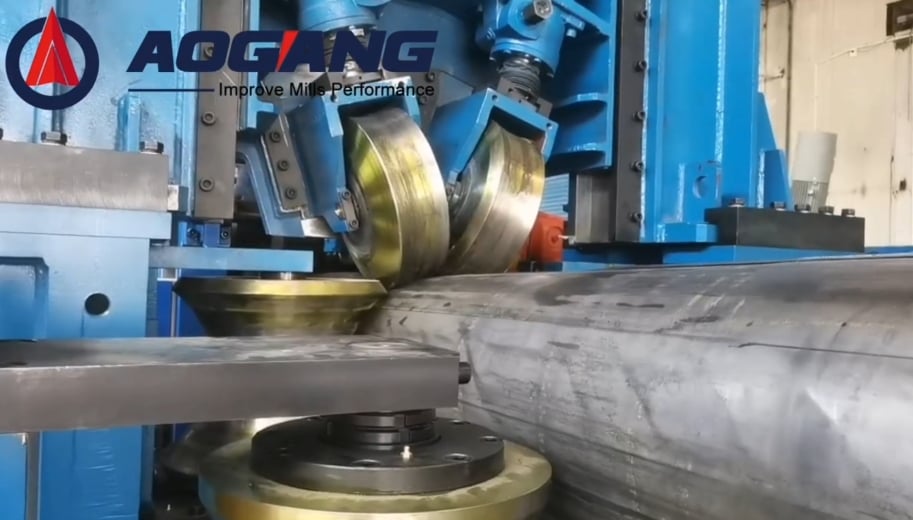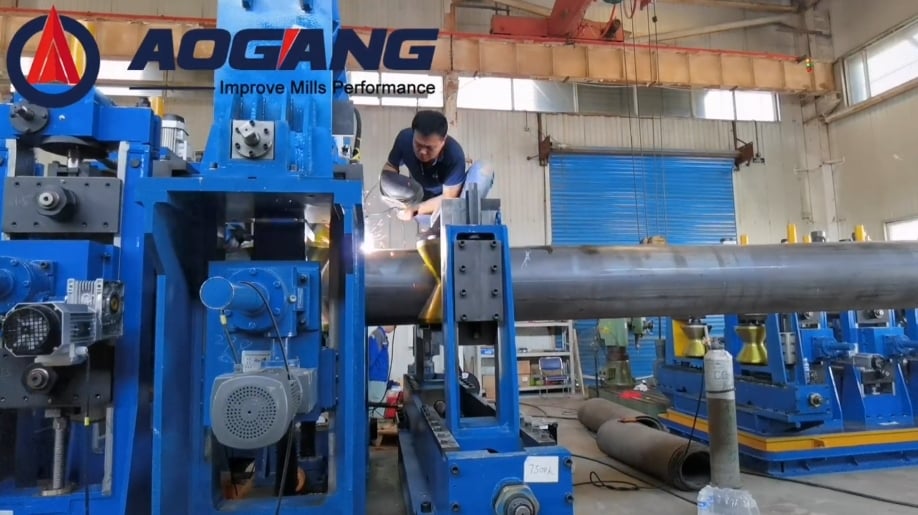When operating a Longitudinal Submerged Arc Welding (LSAW) pipe mill, [^1]lateral deviation—where the pipe shifts left or right during production—is a frustrating issue that can compromise product quality and efficiency. As a trusted supplier of industrial machinery, we’ve identified the **top three causes** of this problem and actionable solutions to keep your production line running smoothly. Let’s dive in.
—
1. Improper Alignment During Material Feeding
The first critical stage where lateral deviation occurs is [^2]**material feeding**. If the steel coil or plate isn’t centered properly before entering the mill, uneven stress distribution will pull the pipe sideways during forming.
Solution :
– Invest in automated centering systems or laser-guided alignment tools to ensure precise feeding.
– Regular calibration checks on feeding rollers and sensors are conducted.
– Train operators to monitor alignment at the start of each production batch.
—
2. Uneven Adjustment of Rollers in the Rough Forming Stage
During the **rough forming stage**, lateral deviation often stems from imbalanced pressure on the left and right rollers. If the upper and lower rollers aren’t symmetrically adjusted, the material will deform unevenly, leading to misalignment.
Solution:
– Use hydraulic or servo-controlled [^3]roller systems for real-time pressure adjustments.
– Follow the supplier’s guidelines for roller gap settings based on material thickness and pipe diameter.
– Implement predictive maintenance to detect roller wear before it causes deviations.
—
3. Loose Edge Bending Rolls in the Fine Forming Stage
The **finishing stage** is where precision matters most. If the edge bending rolls (or “side rolls”) aren’t securely holding the pipe edges, vibration or inconsistent pressure can push the pipe off-center.
Solution:
– Upgrade to adjustable edge rolls with locking mechanisms for stability.
– Optimize the angle and pressure of side rolls based on pipe specifications.
– Install vibration-dampening technology to minimize external disturbances.
**Why Addressing Lateral Deviation Matters**
The lateral deviation isn’t just a minor inconvenience—it leads to **scrap material, downtime, and costly rework**. Worse, consistently misaligned pipes risk failing quality inspections and damaging your reputation in the oil, gas, or construction steel market.
By addressing root causes proactively, you’ll:
✅ Reduce waste and energy consumption.
✅ Improve weld seam consistency and product lifespan.
✅ Boost throughput and ROI on your LSAW mill.
—
**Partner with Experts for Long-Term Success**
At Aogang Machinery, we specialize in high-performance LSAW pipe mills equipped with **smart alignment systems, precision rollers, and IoT-enabled diagnostics** to prevent lateral deviation. Our team also offers on-site training and 24/7 technical support to ensure your mill operates flawlessly.
Need a solution tailored to your production line?
Contact us today for a free consultation!
—
FAQ Section
Q: How do I detect lateral deviation early?
A: Install laser sensors or CCTV monitoring along the mill to track pipe alignment in real-time.
Q: Can worn rollers cause lateral deviation?
A: Yes! Replace or regrind rollers immediately if surface wear exceeds 0.5 mm.
Q: What’s the ideal frequency for mill calibration?
A: Calibrate every 500 operating hours or after major material changes.
—
Let’s keep your pipes straight and your profits growing! 🚀
[^1]: Understanding lateral deviation can help you implement effective solutions to enhance production efficiency and product quality.
[^2]: Proper material feeding is crucial for preventing lateral deviation; explore best practices to optimize this process.
[^3]: Learn how advanced roller systems can improve alignment and reduce deviations, enhancing overall production quality.

